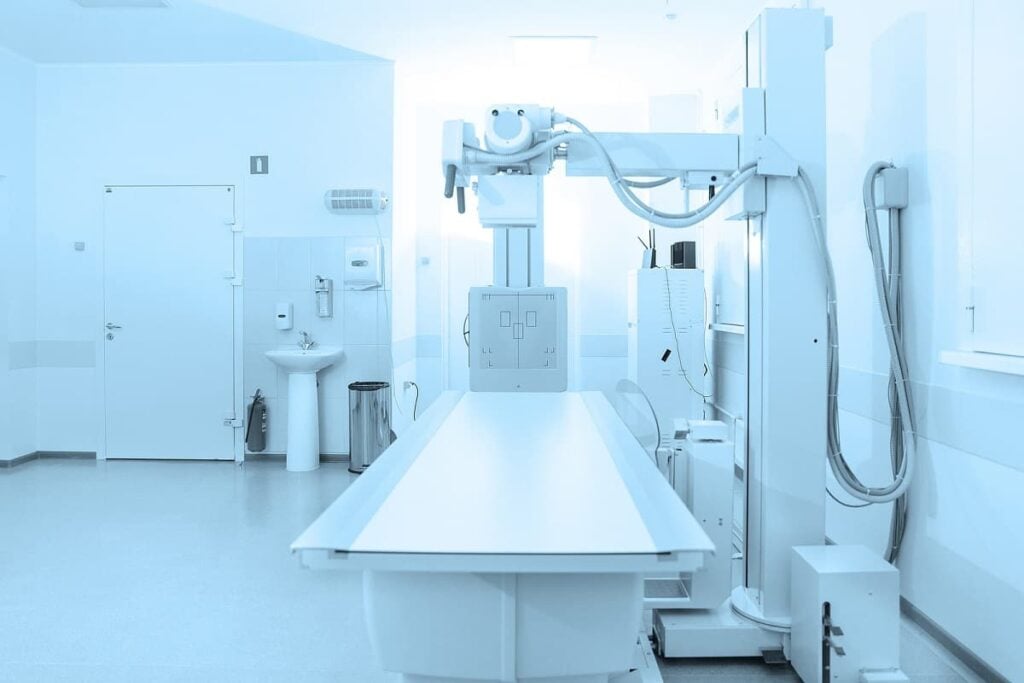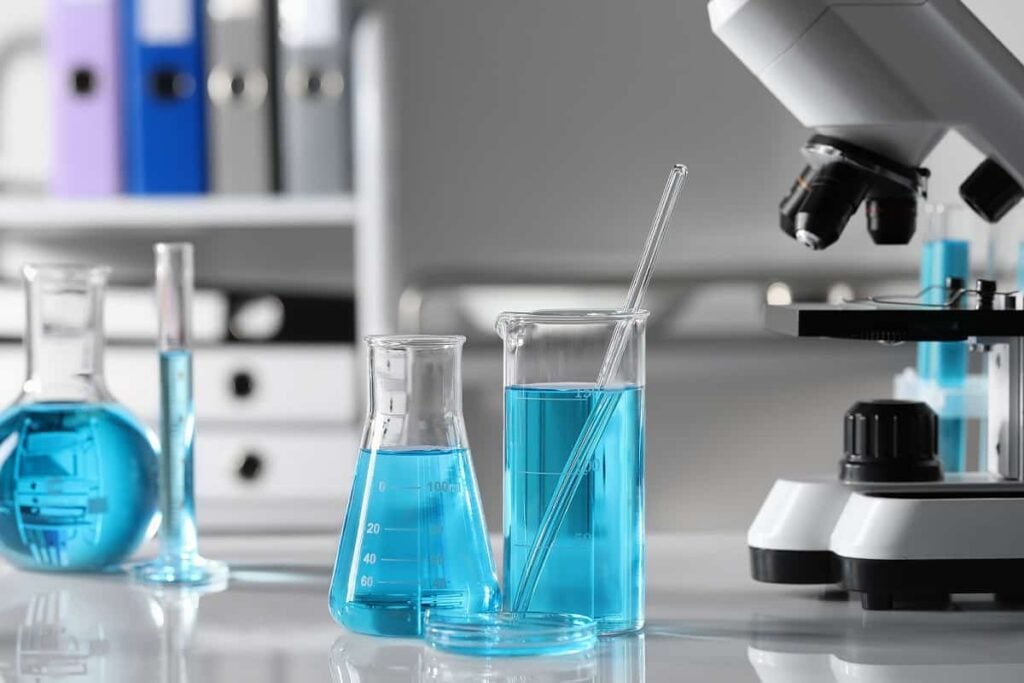AbCellera Stock: Why We Love the Uncertainty
Table of contents

In numerous studies, psychologists have found that rewards of an uncertain magnitude and timing are more motivating than rewards that are certain and expected at fixed intervals. Think about how you might perceive that boring monthly salary vs. a stock options award at bonus time. This psychological phenomenon is what makes certain activities such as fishing and hunting so much fun, not to mention gambling. How much fun would a slot machine be if it paid out fixed amounts of money at fixed times?
In a similar manner, business models with uncertain payouts have a particular appeal to them. Our recent look at Recursion Pharmaceuticals (RXRX) noted more than 50 drugs in their pipeline that represent future payouts down the road. In that piece, we looked at how 4 AI drug discovery stocks are now trading at 50% off. One of those is AbCellera (ABCL).
About AbCellera
Last May we wrote a piece titled AbCellera Stock – Turning Antibodies Into Drugs which talked about a company that’s at the forefront of helping to develop the fastest growing class of drugs. Antibody-based therapeutics, accounted for over $140.0 billion in sales worldwide for 2019 and represented five of the top 10 selling therapeutics. The company came on everyone’s radar because of their success story surrounding Eli Lilly and the Rona.
AbCellera helped discover bamlanivimab from a single blood sample obtained from a convalescent patient, and with their partners, advanced into clinical testing 90 days after initiation of the program. That drug has now been used to treat over one million patients and helped fill AbCellera’s coffers with over $548 million in cash so far. But to better understand what’s happening with the company, let’s set aside the Eli Lilly success story for just a moment.
AbCellera Sans Eli Lilly
With over 36 partners and 136 drug discovery projects happening, there are a lot of moving parts for AbCellera. Simply put, we can divide their revenues into three main categories:
- Research Fees: Payments for technology access and performance of research
- Milestone Payments: Downstream payments in the form of clinical and commercial milestones
- Royalties: royalties on net sales of any approved therapeutics
Eli Lilly aside, only revenues from the first bullet point have been realized so far. By backing out the Eli Lilly revenues, we can measure the research fees AbCellera has realized over the past two years which can be seen below along with the number of customers that brought them in:
- 2020: $34.9 million
Three partners: 35%, 25% and 14%
Eight partners: 26% - 2021: $47.9 million
Four partners: 29%, 17%, 11% and 10%
Twelve partners: 33%
As long as AbCellera can continue signing on new partners, we can expect these fees to continue growing, but at some point, we’ll need to see milestone revenues start flowing in.
AbCellera initiated their partnering program in 2015 and has only had one program – Eli Lilly – result in clinical milestone payments to date. Unlike Recursion, AbCellera actually provides a breakdown of expected milestone payments by development stage.

The probability for a molecule discovered by AbCellera to succeed in reaching Phase 1 clinical trials has been estimated at approximately 37%. Following that, antibody drugs have had an approximately 18.5% likelihood of receiving market authorization from the start of Phase 1 clinical trials. Since the average antibody drug takes between approximately 9.4 and 12 years from initiation to approval, we shouldn’t be surprised no milestone payments have arrived yet. However, keep in mind the value proposition of the company is to increase “the speed and the probability of success of therapeutic antibody discovery.”
Now we can start to see the main difference between Recursion Pharmaceuticals and AbCellera, at least from a business model perspective. Recursion has four candidates up front in Phase 1 trials while AbCellera hasn’t had any reach preclinical trials yet. Therefore, the key metric for AbCellera becomes the number of milestone payments they receive for. They have 131 discovery programs with the potential for milestone and royalty payments (across 36 partners) and we can expect around 49 of those to reach Phase 1 clinical trials (based on AbCellera’s own estimates). If we assume the company will be twice as successful in receiving marketing authorization from Phase 1 than the industry average of 18.5%, then around 18 drugs will eventually start bringing in royalties.
When AbCellera sees their first drug receive commercial approval, they’ll have some number of milestones achieved across each development phase that looks something like this:
- Preclinical: 8
- Clinical: 4
- Regulatory: 2
- Commercial: 1
At this point in time there should be some steady revenues flowing in for the company which can be broken down as follows:
- Research fees: XX%
- Milestone fees: XX%
One would expect that milestone fees would eventually constitute the majority of revenues as their 36 clients start to realize some drug discovery success (at least before royalties arrive). With multiple drug discovery programs hitting milestones, the company would demonstrate traction – that is, their platform would have reached a level of maturity that proves it can regularly churn out successful antibody drugs over time and realize the benefits which should come in the form of more steady and predictable revenue streams. Sure, shares will be priced at a premium when they announce their first commercial success, but letting the dust settle and starting to dollar-cost-average into a position at that point in time seems a whole lot less risky than where we are at today.
Should We Buy AbCellera?
We found the Recursion story quite compelling and believe that the first drug that successfully makes its way through the FDA approval gauntlet will be sufficient proof that the platform works. While AbCellera may not have any preclinical candidates yet, they do have something highly prized that proves traction – revenues. Sure, the Eli Lilly revenues represent a “temporary” COVID thesis, but they have shown what the platform is capable of on an accelerated timeline. As one of our readers pointed out, that’s a vote of confidence that Recursion doesn’t have.
The Eli Lilly accelerated success story may also provide a glimpse of where AbCellera expects the majority of upside to come from – royalties. Here’s the ratio of milestone payments to royalties for the past two years. (Remember, this only reflects the Eli Lilly program which is the only program ever to achieve a milestone payment.)
- 2020: Royalty revenues (93%), Milestone revenues (7%)
- 2021: Royalty revenues (98%), Milestone revenues (2%)
So far, the Eli Lilly relationship has realized $23 million in milestone payments and $526 million in royalties. If we divide the $4.6 billion of milestone payments AbCellera expects to receive by the 136 drug programs they have, we get $33.8 million – the average total of milestone payments AbCellera can expect to receive from any single program over its lifetime.
So, which platform is more compelling – AbCellera or Recursion? It’s an apples to oranges comparison because these are two entirely different technology platforms. Nothing is stopping investors from holding both companies. For us, exciting as both stories might be, it’s early days for both firms since neither has managed to show a commercialization success story yet. For less risk-averse investors, the motivating-uncertainty effect will make both these stories seem quite compelling as they sit today. As we talked about before, you’re now paying much less than what institutional investors paid for the initial public offering of Recursion and AbCellera – 66% and 61% less, respectively.
Conclusion
The promise of large rewards in the future is often the biggest draw which pulls investors towards tech stocks. The uncertainty is where risk-averse investors might have some reservations. Revenue growth today is better than the promise of revenue growth in the future, especially when it’s consistent. This is why software-as-a–service (SaaS) business models command a premium.
Both AbCellera and Recursion Pharmaceuticals are particularly appealing because they offer the potential of large rewards down the road which creates a psychological appeal in the human brain. As compelling as they both might be, we’re going to wait for some success stories before we pull the trigger on either of these exciting AI drug discovery stocks.
Sign up to our newsletter to get more of our great research delivered straight to your inbox!
Nanalyze Weekly includes useful insights written by our team of underpaid MBAs, research on new disruptive technology stocks flying under the radar, and summaries of our recent research. Always 100% free.
















ABCL: 52 Week Range: $7.42 – $39.19
Current share price: $7.48, so it is very close to 52 week low.
I think it is a good time to increase position. Currently I have a very small position, so I am going to double it.
Market timing bad, dollar-cost-averaging good.
As I indicated earlier I bought it on March 14th 2022 and now it is +25%. So timing was great. On that day AbCellera had 52 week low.
As we’ve said until we’re blue in the face, investors should not try and time the markets. Nobody can successfully time the markets – not the most skilled money managers on the face of this planet. It is a naïve thing to do and is best left to speculators.
Q1 2022 (quarter ending 31st March) results:
Total revenue of $317 million, compared to $203 million in Q1 2021.
Six program starts in the quarter bringing cumulative total to 84, up 56% from Q1 2021
Net earnings of $0.59 per share on a basic and $0.54 on a diluted basis compared to $0.43 (basic) and $0.37 (diluted) per share in Q1 2021.
——
Current share price: $7.72. Market cap: $2.2B.
To me AbCellera still looks like a big bargain now ..
It’s very important to look at where the revenues are coming from:
Total revenue was $316.6 million, compared to $202.7 million in Q1 2021. Royalties associated with bamlanivimab and bebtelovimab were $307.0 million. The partnership business produced research fees of $9.3 million, compared to $4.0 million in Q1 2021. Licensing revenue was $0.2 million.
All their revenue eggs are in one basket right now.
Yes, the latest quarter revenues $317 million are most likely a one off – they are a result of delivery of 600,000 doses of bamlanivimab to the U.S. government in the first quarter. US government retains an option to purchase a further 500,000 doses, which if the option were exercised would be shipped by July 31, but I think with COVID pandemic retreating, that is not someting to count on. So it is possible next quarter revenue may be very small.
On the bright side:
“we finished the quarter with over $780 million of unrestricted cash, cash equivalents and marketable securities.”
“We believe that we have sufficient liquidity for well beyond the next three years”.
So with no debt and a cash to last for over 3 years the company has plenty of time (without dilution) to start new revenue sources. They have plenty of programs: during 2021 grew its programs under contract by over 50% to 156, the number of partners by 25% to 36 and program starts by 33% to 78. Currently they have total of 158 programs under contract.
Stan D, Stock at 9.97 today 9/19, care to venture an opinion on price decline and near turn action? Thank you.